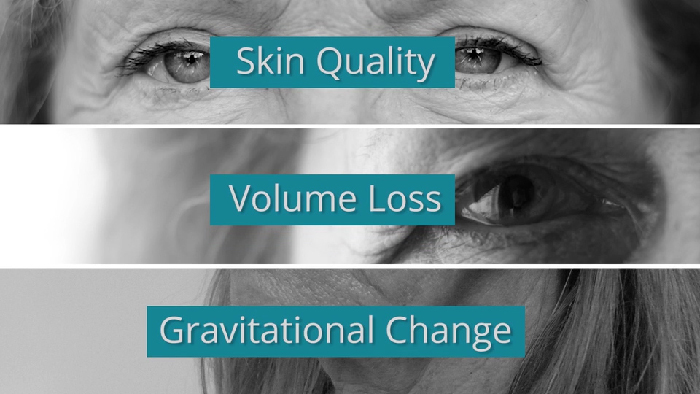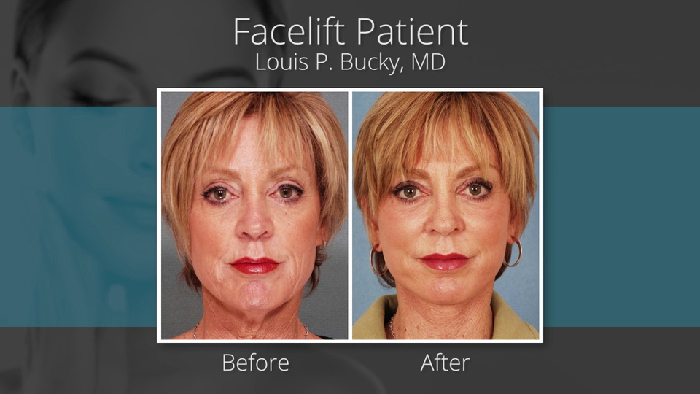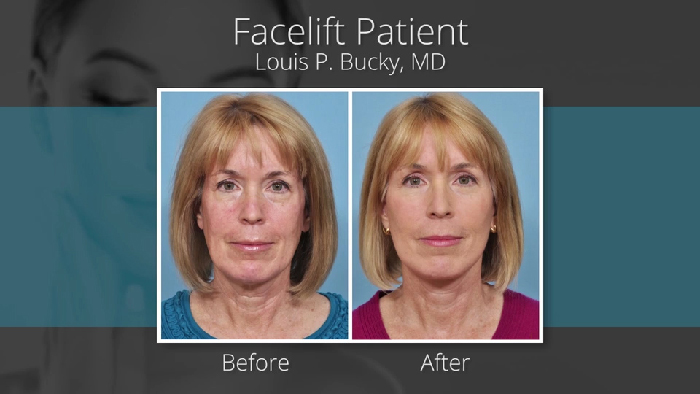Do you ever look in mirror and momentarily not recognize your aged face? Is there a disconnect between how young you feel on the inside and how you look on the outside? If so, then it might be time for you to consider facial rejuvenation.
While injectables like Botox and lasers can all help to “turn back the clock”, how do you when it’s the right time for a facelift? Dr. Louis Bucky of Philadelphia walks you through the 3 things that he looks at when examining a potential facelift patient, as well as well as why he feels that a global approach helps deliver a faster recovery and a superior outcome for patients.
What’s the Right Age for a Facelift?
Thanks to the continual advent of non-surgical techniques – including fillers specifically designed to treat certain areas of the face such as the cheeks and the lips – patients have a slew of resources for fighting off Father Time. In the end, however, Father Time always collects.
While Botox can erase fine lines and wrinkles, fillers replace lost volume, and lasers improve skin tone and texture, none of them can lift skin and muscles that have succumbed to gravity. When your face begins to seriously droop, it is time to consider a facelift. At what age does this happen? When Dr. Bucky examines a potential facelift patient, he is looking at three things:
- Skin quality
- Volume loss
- Gravitational changes especially in the jowls & neck
Our skin is our largest organ and is the first place to show the earliest signs of aging. Lifestyle choices such as smoking, sun exposure and diet can definitely affect skin tone and texture, but time is the real killer. As we age, our skin quality diminishes.
Second, a young looking face is a plump face. Anyone who had a round face in their youth may have bemoaned it at the time, but fat in the face is a gift to the aged. Volume loss in the mid-face can lead to a sunken appearance while a loss of fat at the juncture between the lower lid and the cheek results in those crinkly hallows that make a person look perennially tired. This is one of the top complaints for so many men and women.
Last, as gravity begins to pull down on the skin and muscles of the lower face and neck, everything starts to sag to the point where your jowls begin to become noticeable. These three changes can present at different times for different patients so there is no definite age at which a plastic surgeon can tell a patient, “You need a facelift.”
Dr. Bucky has facelift patients in their 40’s as well as those in their 60’s and 70’s. But he finds that women, in particular, probably exhibit the most rapid change in their facial aging right around their peri-menopausal years. For most women, this would be in their early to mid 50’s, but again, every patient is different.
There is also a genetic component to facial aging. If your father had heavy jowls, you might inherent these as well. Or maybe your mom had prominent bags under her eyes. For Bucky, the ideal time for a patient to move from non-surgical procedures to a facelift is when:
- The patient still has good skin quality
- When volume loss, particularly in the mid-face, is no longer sustainable with fillers alone
- When the patient starts to show gravitational pull in the lower face/jowl area and in the neck
Bucky believes that, “the earlier you do it, the better your result is going to be.” However, regardless of when you have a facelift, you can expect your improvements to last anywhere from 7-10 years.
Global Approach to Facelifts
While Bucky believes that a facelift alone can and should deliver a serious improvement, he prefers to take a global approach for all of his patients. What’s a global approach? It’s treating the patient as a whole. This starts with vitamin support for every facelift patient to enhance healing and skin quality. Your skin is like the canvas for a painter; the finer the canvas, the better the result. This is true for any surgical procedure, but since the skin on your face is always on display, it is particularly important for facelift patients.
Next, he recommends lymphatic massage which will greatly reduce post-op swelling. This not only will make you look and feel better, but it will help to speed up your recovery. And last, Bucky prescribes high quality skin care for each and every patient.Not including skin care with a facelift is like, “building a house and not painting it.”
This global approach is something that can occur prior to the need for a facelift, and may help to reduce the severity of facial aging over time. A holistic mindset for surgeons seems to be a growing trend, one that always puts patients first.



















Facebook
Twitter
Instagram
YouTube
RSS